The minute my girls jump out of the van and skip down the winding boardwalk, me following close at their heels, we can hear the birds.
What begins as a dull croaking slowly becomes a chorus of squeaking and squealing, grunting and guttural gulping.
Rounding the final bend, we finally catch a glimpse—a sea of white feathers punctuating the rippling pond.
“Egrets,” says one of the birdwatchers next to us, still peering through his binoculars.
In less than a month, most of them will be gone, having flown south for the winter.
This time next year, they will travel thousands of miles to return, once again, to this very pond.
They will not need to think about it.
Their soft, animal bodies will understand where to go.1
One afternoon, my girls are watching a nature documentary at the kitchen table while they stuff fistfuls of Goldfish crackers into their open mouths. The documentary is punctuated with their usual squeals, gasps, and peals of laughter, but when I catch them mid-bite, faces slack-jawed, staring at the screen, I come over to watch with them.
A thousand baby sea turtles fill the screen, each of them wriggling out of their shells and slowly crawling towards the ocean. David Attenborough’s voice reverberates through the speakers and we watch as, one by one, the hatchlings reach the shallows.
Sea turtles, explains Attenborough, are able to return to the beach where they once hatched because they are imprinted with the earth’s magnetic field when they are born.
They know where to go because they can feel it in their bodies—what scientists call, magnetoreception.
As it turns out, Egrets are the same.
This fact stays with me for weeks—the idea that animals carry with them a wisdom beyond words—where to go and when, and maybe most importantly, how to come home.
Our family just finished reading aloud The Wild Robot by Peter Brown, in anticipation of the recently-released film.
A few days ago, I watched the movie in theaters with my six-year-old and was surprised at how tightly the story’s thread wound itself around my heart.
Roz, the main character, has the kind of task-based discipline you’d expect in a robot. Rigid and dutiful, she follows each direction to its conclusion. Her only goal is to meet or exceed expectations. She is mastered by this performative programming.
But there’s something Roz hasn’t anticipated—living in the wild with others requires instinct and intuition, kindness and love, the ability to care deeply for others. None of these things are quantifiable, programmable, or logical.
Roz inevitably struggles to grasp this at first, but slowly begins to override her programming to survive and thrive in the wilderness. In my favorite moment in the movie, Roz frantically rips out her core processor—the part of her responsible for programming her every move—to make room to carry her child back home to safety.
“What are you doing? You need that!” her little one shouts.
“I have everything I need,” says Roz, as they plummet back to safety.
There is too much information these days. We know this.
We can hardly hear our own voices, anymore.
Everyone is telling us how to parent, how to eat, how to vote, how to love, how to succeed, how to be beautiful, how to make more money, how to be happy.
There are many, many reasons I struggle to trust myself and my own intuition and choices, but the sheer volume of the world is perhaps one of biggest.
I’m ready to turn inward before turning to other voices.
I’m ready to opt out of the scramble and the noise.
I’m ready to trust—my voice, my intuition, my body.
I’m ready to let myself know what I know.2
The best therapists I’ve had have helped me come back into my body.
They help me return to myself, but there is no shortage of resistance on my part. I am always terrified. I am always uncomfortable. Living in my head with my rules and logic and rigidity feels so much safer.
But like Roz, I’m learning how to shut up and feel things. How to get out of my overactive mind and really pay attention to my body. How to become quiet, curious, attentive. Less robot, more human. Less brain, more body.
More and more, there are times I feel like an egret flying back to its pond, or a sea turtle swimming back to its natal beach, or Roz the robot overriding her rigid programming and going on sheer instinct, intuition, love, trust.
There is no map for this work—only body, only soft, God-given animal wisdom.
And maybe that’s a good enough place to begin.
Maybe that’s enough, for now.
The autumnal equinox occurred just a few days ago and for one brief moment, the hours of daylight and darkness were almost exactly the same.
On that day, I hold up an apple and explain to my six-year-old how we are tilted away from the sun. How, the more we orbit, the more daylight we lose. How we will not begin gaining daylight again until the end of the year.
We look out the windows during dinner, now, to find a dusky gray already settling over the backyard, our own faces mirrored back at us in the pane.
And maybe this, too, is an invitation—not to look outward, but to press inward, to learn what it is to come home to ourselves, again.
September Delights:
Currently reading:
Somehow by Anne Lamott was as gorgeous and heartfelt as I hoped it would be. I think one of Lamott’s greatest strengths is how her voice is always her voice. It rings out clear like a bell and stays with the reader for awhile.
is such a rich, beautiful read. I’m taking my time with this one. Wilbert has a way of seamlessly weaving her knowledge of nature with her own struggles and stories, and I’m captivated. is a thoughtful and nuanced perspective on how to move in and out of spaces as you change and grow. I’ve been following and reading Emily’s work for a while, and she is one of the best voices I know on making decisions and finding peace.You Are Here: Poetry in the Natural World is a beautiful anthology of poetry collected and edited by Ada Limón. I’ve been waiting to read this collection for months, and am eager to hear the different voices and perspectives on what “nature poetry” really is.
A few things I’ve been loving lately:
This ribbed maxi skirt from Old Navy is one of my favorite cheaper finds this fall. It’s very comfy, not too thin, and can be dressed up or down.
I hate the way most foundations feel on my face, and I also tend to have more oily skin, so this mineral, buildable powder by Bare Minerals is my new favorite when I do wear makeup (which is not often).
Fall scented candles from Target! I’m a sucker for these every year. This year I’m loving this harvest chestnut one and this salted honey one.
I use these Nuun tablets when I do a difficult barre class, when I feel like I’ve done a terrible job hydrating myself that day and (oops) it’s 6 PM, or when I’m getting sick. I love them so much, and they’re cheaper than (but comparable to) LMNT.
A few things the kids have been loving lately:
My first grader adored this Dear Dragon book she got for her birthday, and sailed through it very quickly. She also is loving the Magic Treehouse graphic novels.
We are all loving The Book of Belonging, which came out very recently! It’s not so much an actual kids Bible translation, as it is a collection of Bible stories with diverse illustrations and beautiful depictions of God, the Holy Spirit, and Jesus. We still adore our Jesus Storybook Bible, but having this in our collection has been good for all of our hearts (maybe especially mine)!
I’ve been pulling out some of my Public School Teacher Tricks just for fun, and “brain break” videos are one of them. (If you have ever worked in a public school, you already know what I’m talking about). My girls LOVE taking dancing and singing to either Pop See Ko or Boom Chicka Boom.
A few good eats:
I bought this cookbook (written by olympian runners!) when I saw that
had recommended it while training for her triathlon. It might just be my favorite cookbook ever! The recipes are fast and easy, and prioritize protein and tons of fruit + veg. My favorites are the smoothies, the grain salads, and the power bowls.Honorable mention for another good cookbook: What To Cook When You Don’t Feel Like Cooking! The recipes in this book make me really *want* to cook dinner. A true miracle.
We don’t eat a lot of beef, but I’ve been trying to add it into the rotation a tiny bit more since I’ve started doing more strength training. This chili was AMAZING. I used crushed tomatoes instead of diced, added 2 Tbsp cocoa powder, and made sure not to skip the beer. Yum.
Behold, the apple crisp I sometimes let my kids eat for breakfast. (Yes, really).
Watching + listening:
Chimp Crazy—YOU GUYS. I don’t even know what to say. This was like Tiger King but somehow even more insane?!
Everyone has their favorite Christmas shows or movies, but I think Fall shows and movies are so underrated! Here are my top picks: The Great British Baking Show (a new season just started!), Gilmore Girls reruns, You’ve Got Mail, While You Were Sleeping, When Harry Met Sally, and Little Women.
I adored this conversation between Kate Bowler and Francis Collins. He is so thoughtful and well-spoken, and the way he tells his own faith story is incredibly refreshing.
Some good writing:
wrote this piece for The Rumpus and it immediately grabbed me. I couldn’t stop reading it. Astounding. Also, her Substack piece on Unknowing the Known World was a good creative push for me. I always come back to Ouellette’s work and teaching when I feel “stuck”. writes about motherhood and the creative life so beautifully, here. Her voice, the way she weaves the story’s strands together, and the lull of her words in this piece were truly a balm. encourages us in her latest Substack to take people as they are—always a refreshing, helpful reminder for me! ICYMI:
I wrote this essay on learning that joy is not a luxury, and recovering from my own midwest-eldest-daughter struggles (IYKYK).
Part-Time Poets’ seventeenth issue comes out tomorrow, where I share a poem inspired by women-over-thirty Reddit threads (yes, really).
That’s it, friends!
Here’s to remaining soft and tender, and to turning inward before we turn outward.
Credit for “soft, animal bodies” goes to the one and only Mary Oliver in her poem Wild Geese. (Yes, this is my second essay in a row referencing this poem and I am not sorry).
If you are also someone who is untangling from conservative religion, I understand if this whole “trust yourself” business makes you feel like you’re about to have a stroke. While this is an entirely different conversation for a different time, I will say this: We are not gnostics. Our bodies have God-given instincts and intuition and gut feelings, and we would be wise to listen to them. Often, the church triggers its own followers by sending a message that is all too well-known by trauma survivors, which is: do not listen to your body, do not trust yourself, do not know what you know. We are not only bodies, but we are living in bodies and to sever ourselves from that truth is to (on some level) disassociate, which is to perpetuate harm. (
is a wonderfully nuanced, thoughtful, faithful writer on this topic).




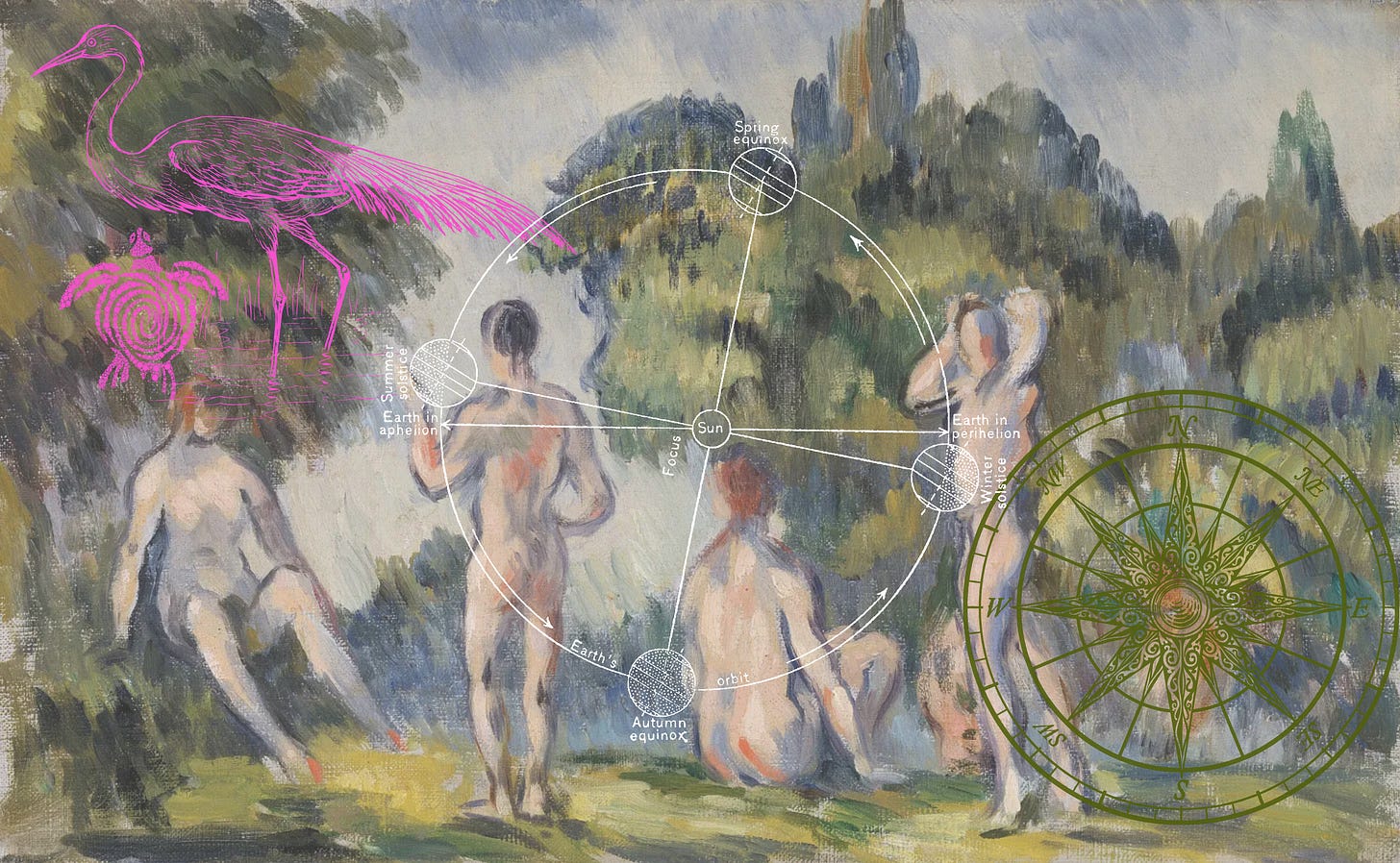
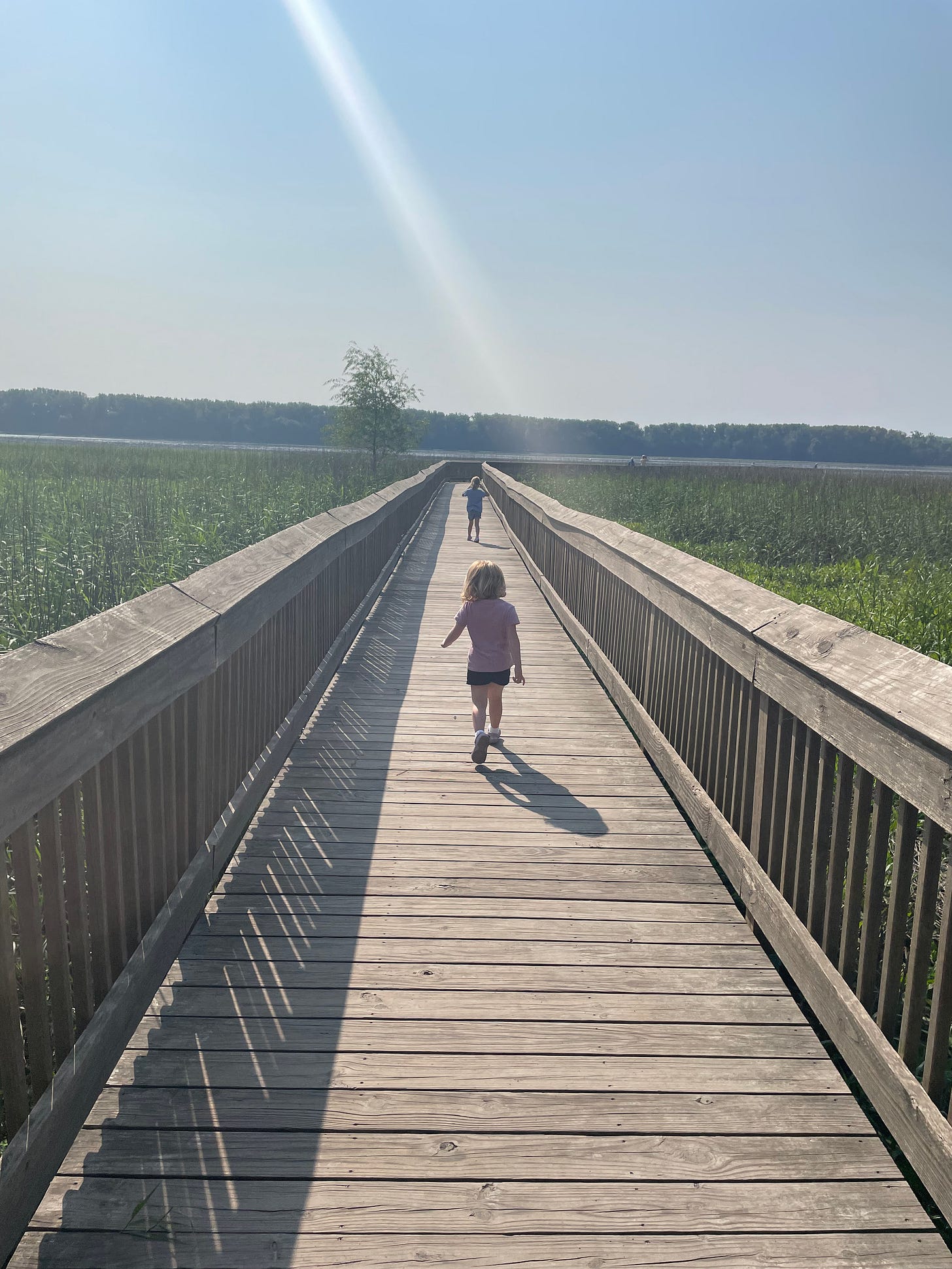

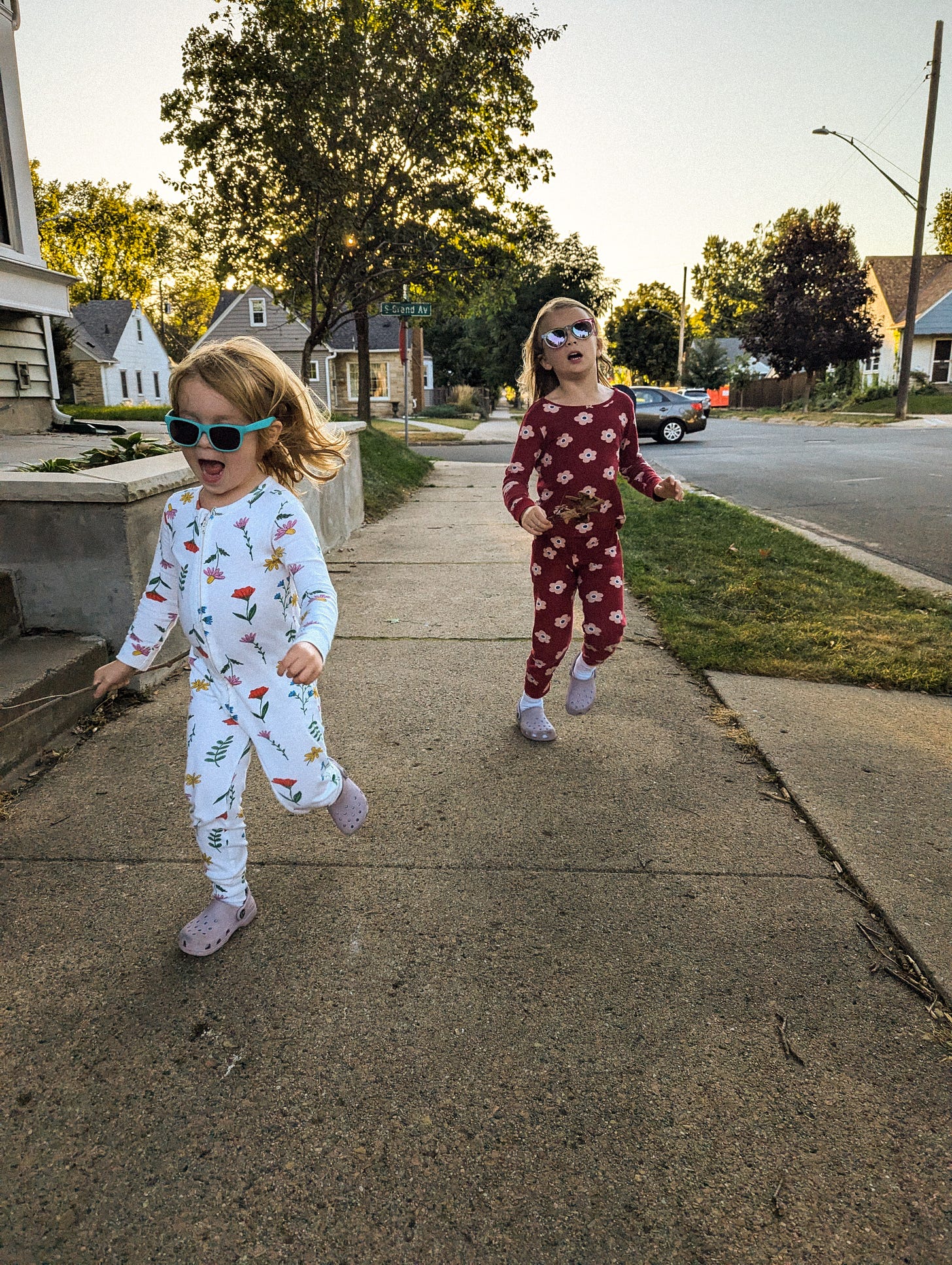

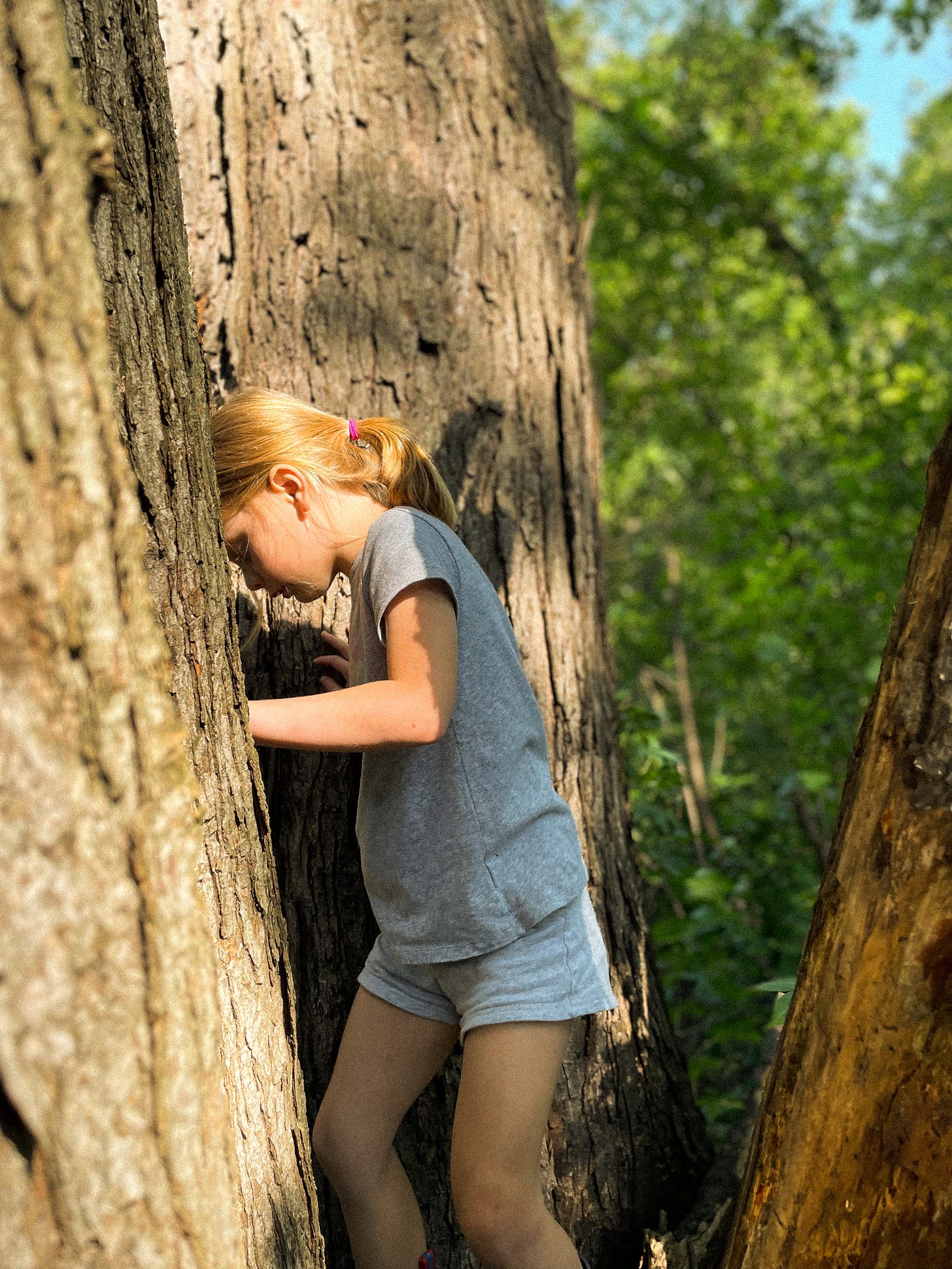
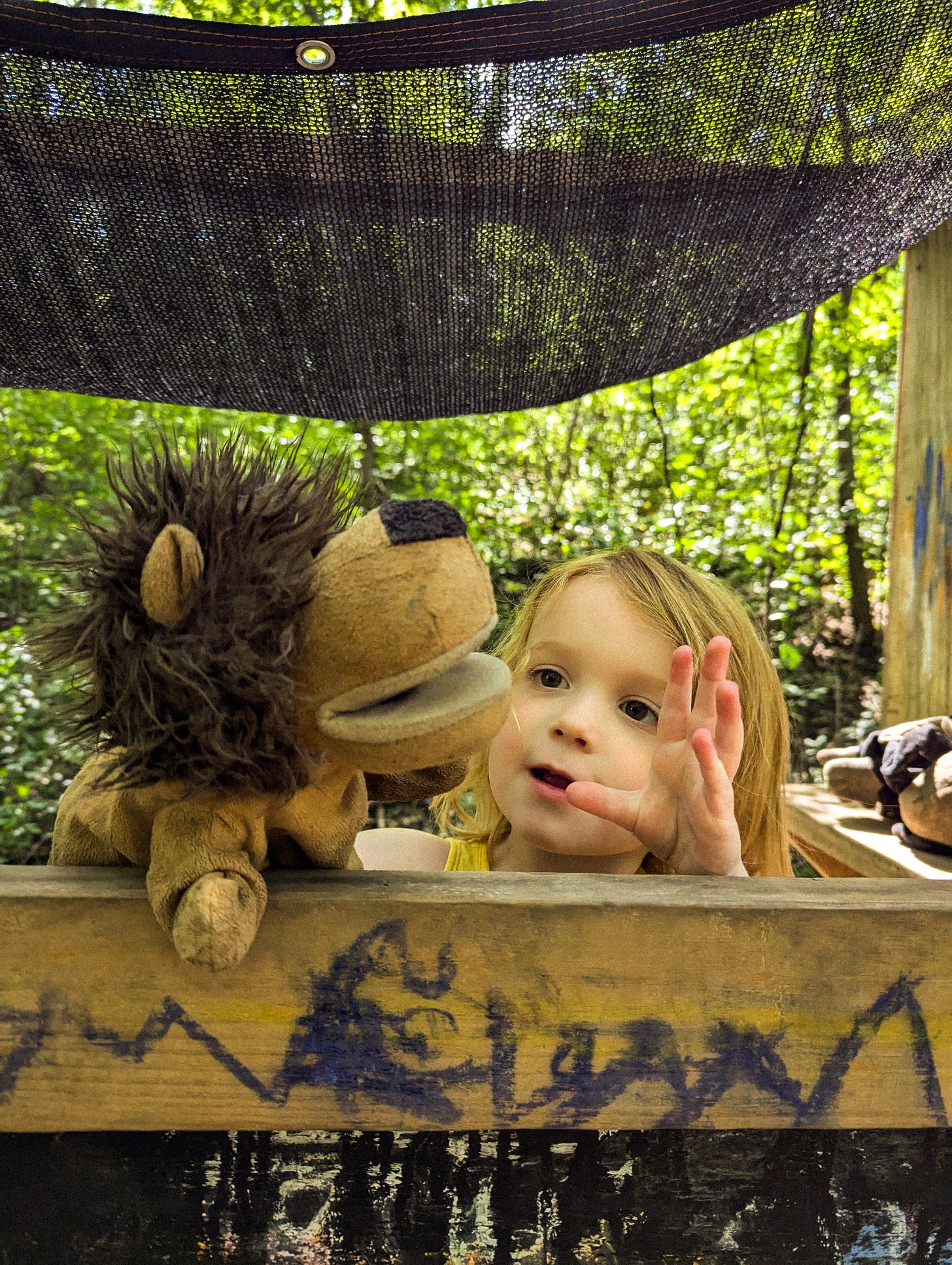

Just stopping in to say, I loved this. And I loved the juxtapositions between topics. Good Friday read!
Love your daughter’s artwork! My kindergarten has started bringing home drawings of me because “I love being with you” and I can’t throw out any. Also added magic treehouse and book of belongings to my cart.